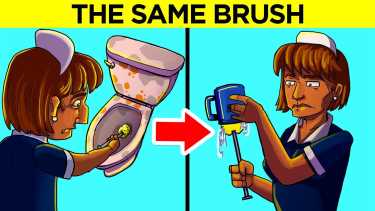Unbelievable Gardening Hacks
Let's take a look at some truly ingenious gardening hacks!
Life HacksHave you ever wandered through a garden or a field, and noticed something strange like a bag of soil strapped to a branch? Or some plastic molds clipped onto a plant? Well, as weird as it appears, this is a secretly ingenious farming method that’s become a god-tier gardening hack! And it’s not the only one!
From cloning trees to changing the colors of your flowers, let’s take a look at some green-fingered gardening tricks that’ll blow your mind.
Wrapping Bags Around Plants
Why would anyone strap a bag full of soil to a tree? So, what possesses a gardener to strap such a bag to a random branch of papaya trees?
Well, this is actually a popular tree-cloning technique called air layering. It’s a method of creating brand new trees from the stems of a parent plant, instead of waiting for the seeds of their fruit to germinate and grow.
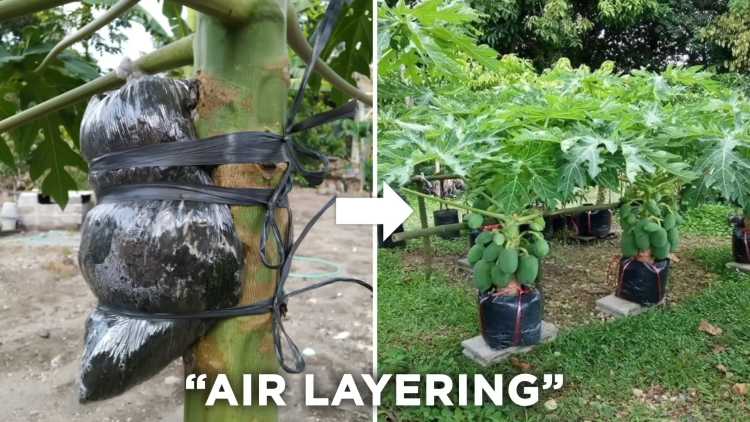
In the wild, air propagation happens when a low hanging branch touches the ground and takes root. To replicate this method, farmers and gardeners need to trick the plant into thinking the branch is underground. Sounds tricky, but plants can be easily fooled.
First, a papaya farmer – for example – will choose a thick, straight, healthy branch and make a 1 inch cut into its base. Then they apply hormone rooting powder, because even though plants can produce roots on their own, this ensures the roots develop faster and stronger. It’s the super soldier serum of the plant world!
Nutrient rich moss and soil is then packed into the open cut and secured in place with a plastic bag. This keeps the area moist and warm; the perfect conditions for a plant to take root! And little does the branch know its three feet off the ground!
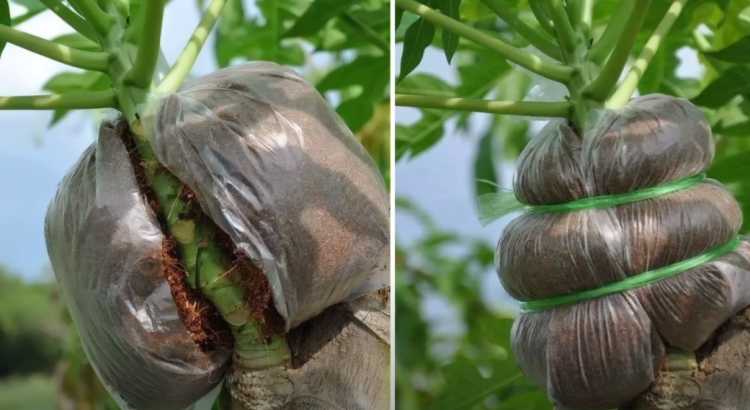
After one to two months, roots should begin to grow from the wound, at which point the branch is ready to be cut off and planted into fresh compost. A whole new papaya plant in less than half the time it’d take to grow a new one from a seed!
But if you want to take this method to the next level, you can invest in something a little fancier than plastic bags: purpose made Propagation pods! The pods open up and clip around the branch, giving the roots a dark and protected environment to thrive in!
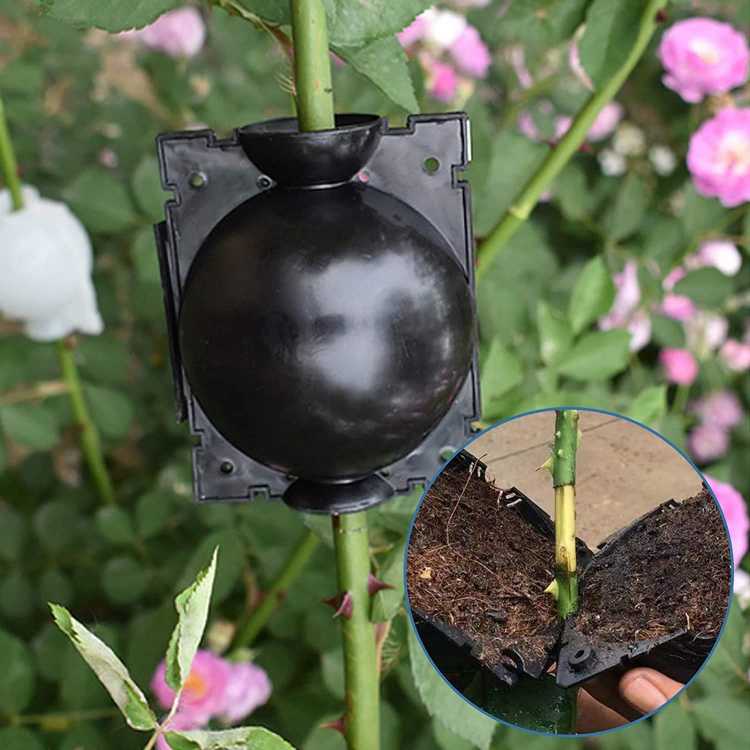
And when they’re cracked open, you get a weirdly satisfying ball of roots to pry out and plant! This technique looks so cool, even I might be tempted to take up gardening!
Buds For Slugs
After a long day, a cold beer in the sunshine is the perfect way to relax, isn’t it? But did you know snails and slugs also enjoy a cold one? Well, if they’re laying siege to your garden or riddling holes in your cabbage patch, you might be able to stop them in their slimy tracks with a beer trap!
All you have to do is place a cup on the border of your vegetable patch and put a serving of beer in it. Slugs and snails are attracted to strong, yeasty smells, and will be distracted from your plants by the temptation of a brewski.
Though after they slide down to this free bar they’ll drown in it, as their bodies can’t actually handle the toxic ethanol beer contains. That makes this a natural, poison-free solution to your snail plight! But you are then left with a beer full of slugs!
However, beer isn’t the only booze that can be put to good use in your garden! Surprisingly, vodka has antibacterial properties, meaning it can act as a fungicide – a chemical that destroys destructive fungus.
So, incredibly, dipping seeds in a shot of vodka solution can help them germinate disease free! Vodka can also keep cut flowers looking fresher for longer as it inhibits ethylene production, a ripening gas emitted by plants that causes them to wilt.

But hold on! Before you grab the Smirnoff bottle and start doing shots with your houseplants, you should know that plants are serious lightweights! They can only tolerate a very small amount of alcohol, so only dilute one or two tablespoons of vodka into a large vase.
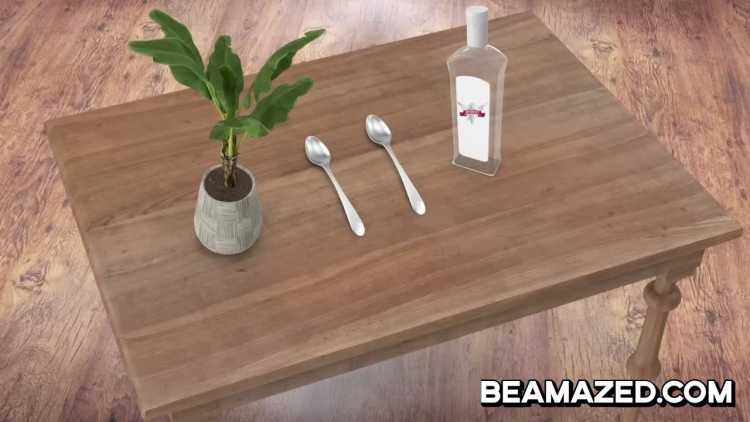
Alternatively, if you have a hangover kit nearby, then aspirin can also be used to prevent your flowers from wilting. Adding crushed aspirin to the vase of your cut flowers lowers the pH of the water and allows nutrients to travel through the stem faster, keeping your flowers alive for longer!
To Water or Not to Water?
If you’re anything like me, you forget to water your house plants all the time. And then you panic and throw buckets of water over the poor withered up plants in a desperate attempt to save them. But that’s an even bigger mistake!
Overwatering can seriously mess with the water pressure of your plant. Since plants don’t have muscles or bones, to remain upright they use something called turgor pressure. This is generated by the amount of fluid in their cell membranes, which allows plants to hold up their leaves. However, too much fluid can cause the cell membranes to burst!
These destroyed plant cells form blisters on the leaves which eventually erupt and form brown or white wart-like growths. You may think your house plant is diseased, but really, it’s because you’ve been too heavy handed with the watering can!
Overwatering also damages the roots of your plants, effectively drowning them, and the damp soil can encourage fungal spores to grow causing root rot. But if your plant pots trap water, then there’s a simple solution to prevent your plants from drowning: use diapers!
Diapers are great at absorbing excess water, so inserting one into the bottom of your pot can prevent your plant from drowning! The diapers also retain moisture in the soil, ensuring your plant has constant access to water even if the soil is dry.
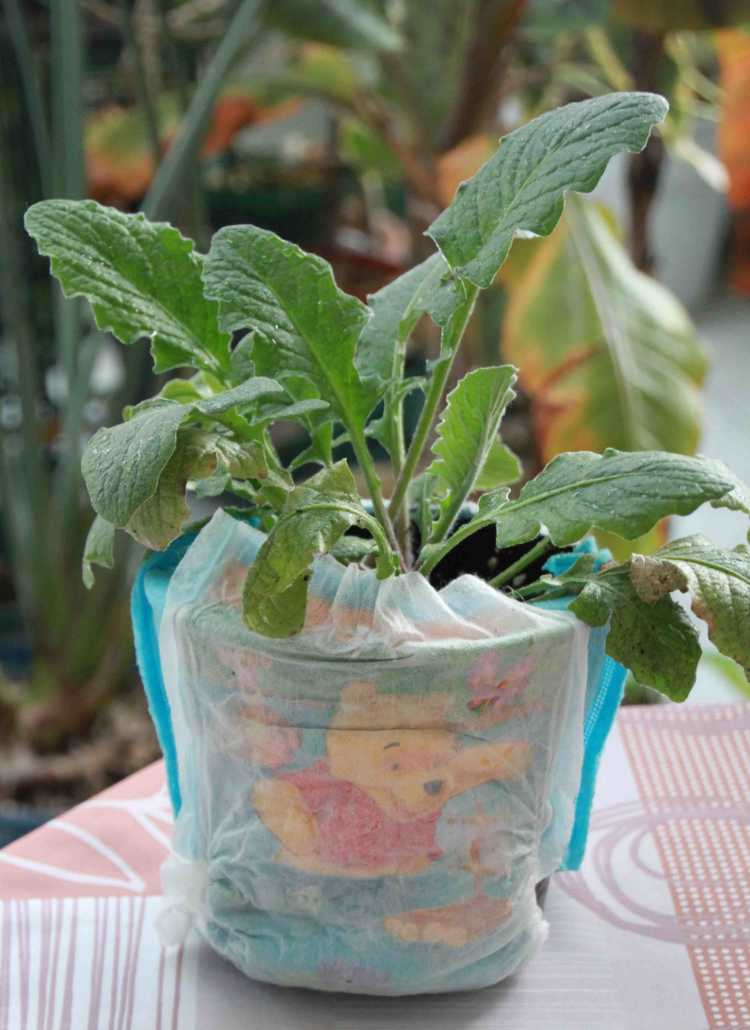
This gardening hack is especially useful to avoid drippy hanging baskets, with the moist, warm conditions a diaper provides keeping your hanging plants leak free and happy! It’s the perfect hack for that person who thinks of their plants as their babies.
The Power of Cinnamon
Both spicy and sweet, cinnamon adds some next level flavor to anything sugary! But this warm spice isn’t just for delicious desserts. If you’re sowing seeds, adding a pinch of cinnamon to the soil can prevent damping off disease. This is where seedlings die off, collapsing under a mass of white fungal growth.
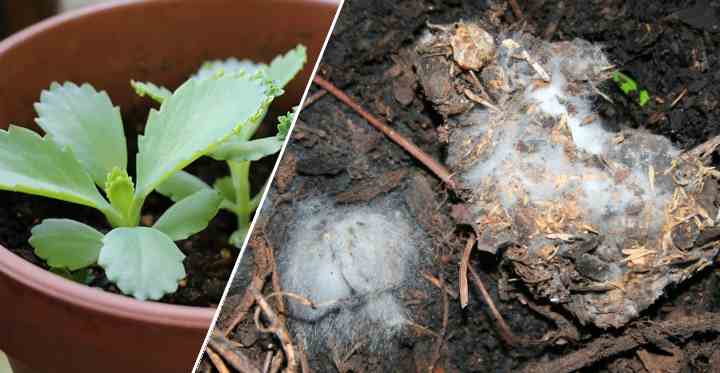
Cinnamon has powerful anti-fungal properties, because its oils destroy the cell membranes of invading fungal spores. So just a dash of cinnamon and you’ll protect your plants from harmful fungi!
But it’s got a few more uses too! The pungent aroma of cinnamon is one that rodents despise. So, if you keep a couple of cinnamon sticks in your larder, the mice should stay away.
And it’s not just rodents that cinnamon works its spicy magic on. If ants keep invading your home, you can scramble their senses with a little cinnamon! Ants rely on pheromone trails to navigate themselves from their colony to the cupcake in your kitchen.
Therefore, sprinkling a trail of cinnamon over an ant trail will overpower the ant’s pheromones and blind their senses, forcing them to retreat.
Cat Free Zone
Do stray cats keep using your garden as their own personal litter box? Or do they keep you up at night with their incessant yowling and feline shenanigans? Well, there’s an all-natural hack you can use that’ll help keep your yard cat free – and all you need for it are a few orange peels!
You see, cats have incredibly sensitive noses and generally despise the strong scent of citrus. Boiling orange peels will leech the orange oil into the water, providing you with a harmless spray to get rid of feral cats in your garden.

Alternatively, you can scatter orange peels onto the topsoil! The citrus scent will stop stray cats from using your garden as a litter box! So, hang onto your orange peels and use them to help defend your yard from curious kitties.
Seed Roulette
If you’ve been stuck staring at a pot of soil for months, waiting for your beans to sprout, then I’m sorry to break it to you, but not all seeds germinate. To save yourself time – and money - it’s best to work out which seeds are still alive and viable, and which ones are defective and done for.
Luckily, there’s an easy trick you can do at home to figure this out. All you need to do is scoop up a handful of seeds and drop them in a glass of water. Then give it a good stir and let the seeds settle.
Those that float are defective. Those that sink are alive and ready to be sown! This is because the viable part of the seed is a dense package of protein and lipids that will develop into a future plant.
If these plant embryos are properly formed, then the seeds will be denser than the surrounding water and sink. If the seeds are lacking in important proteins, then they’ll float! With this little hack, you’ll never have to gamble with the seeds you plant ever again!
Jello for Jellybeans
Strawberry jello is probably he best wibbly, wobbly snack around! But did you know plants enjoy this jello snack too? Plants enjoy jello so much that beans and seeds mixed with unflavored gelatin powder will germinate faster than those without!
That’s because gelatin is a powerful liquid fertilizer. It’s jammed full of nitrates, the inorganic molecular form of nitrogen, which are one of the big three minerals plants need to grow. The other two minerals are phosphates and potassium.
Flowering plants and crops use these three major nutrients in the ratio of 3-1-2, that is three parts nitrogen to one-part phosphates and two parts potassium. Therefore, a nitrate-rich fertilizer is vital to their development, and gelatin is perfect for the job!
But hold on! Before you start chucking jello cups at your rose bushes, you should know gelatin is best absorbed by plants in a solution form. Pour a packet of unflavored gelatin powder into your watering can and watch your beans thrive!
Natural Bath Sponge
Don’t you just hate the scratchy, plastic bath sponges you get from the dollar store? Well, did you know sponges actually grow on trees? Technically, they’re vines. In fact, plastic bath loofahs are based on the design of natural loofahs, the fruit of a vine that’s part of the pumpkin family!
Loofahs are super easy to grow and produce cucumber-like fruits that are fully edible! But if you leave these fruits to fully mature and dry out in the sun, they produce fibrous sponges. Simply cut away the tough shell and you’ll end up with a loofah sponge you can use to wash up the dishes or keep you company in the shower!
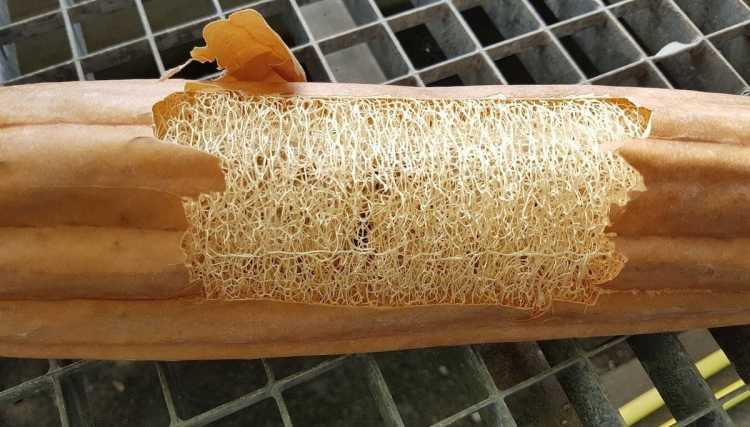
And if you resew the seeds, you’ll have a never-ending supply of them! It’s softer and more exfoliating than any plastic sponge you could buy.
Plus, once the loofah gets old, you can just throw it into your garden because they’re fully biodegradable! Perfect compost for your plants, unlike those plastic loofas which just end up in a landfill.
Regrow Store Bought Vegetables
Are you looking for an interesting houseplant to impress your friends? Well, instead of throwing away your food scraps, you can regrow them into houseplants! This only works with fruit and vegetable scraps; there’s no way to regrow mac and cheese, sadly.
For example, the leafy top of store-bought pineapples can be regrown as unique looking house plants! Regrowing these spikey boys is easy; simply cut off the leafy crown and remove the lower leaves. Then trim down the sides of the flesh until you see root buds, they look like small brown bumps around the base of the stem.
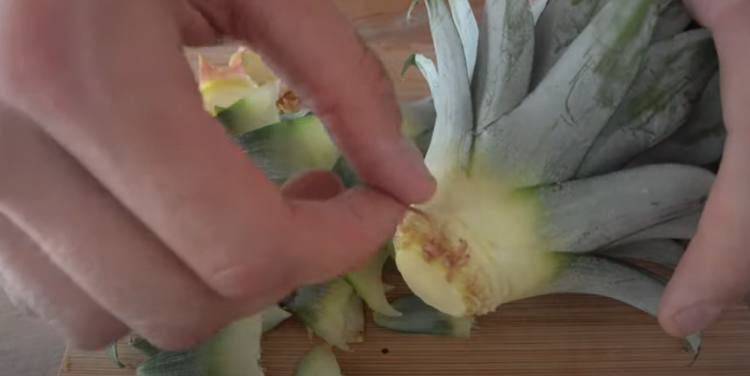
Plant the pineapple crown in soil and water thoroughly, placing it in a well-lit area. Before you know it, you’ll have your own funky pineapple plant, which will make your friends wonder where you got it! Little do they know, it’s technically from the grocery store!
Sprouting a few carrot flowers takes even less effort. Simply place a couple of cut carrot tops in a shallow dish of water and watch them sprout over the coming days! Once root buds have formed, transfer the carrot tops to soil.
Unfortunately, a carrot top can’t reproduce a whole carrot. But the carrot top will regrow into the carrot plant, which makes for a cute, low-maintenance houseplant. They have fern-like foliage and produce lacy white flowers, making it a perfect ornamental plant to have in your home!
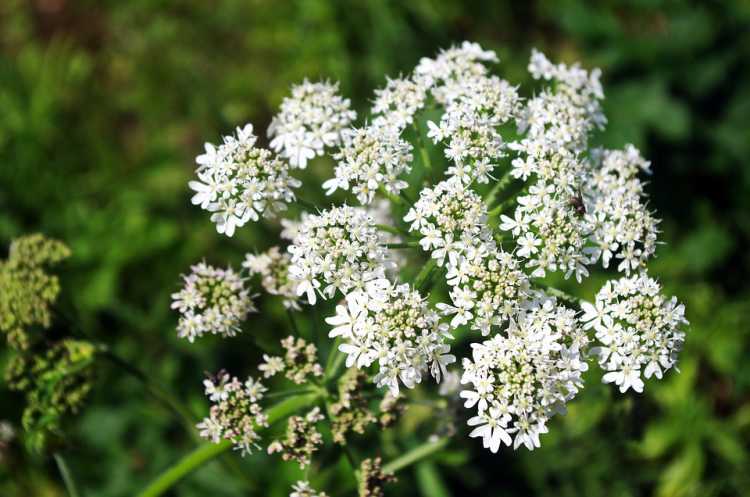
Flower Power
Do you want pink flowers in your yard, or blue? Or what about purple? Luckily, it's possible to plant hydrangeas and switch between all three colors! Astonishingly, planted Hydrangeas can change color from pink to blue, and every shade of purple in between!
Hydrangeas prefer acidic soil, that is soil with a pH below 7. But a slight variable in the pH of the soil can turn the flowers from pink to blue! This is the result of a chemical reaction with aluminum ions in the soil that bind to the plant’s pigments which produce its color.
Soils with a pH of 5.2-5.5 tend to contain a larger volume of soluble aluminum ions, producing blue flowers. The less acidic the soil gets as the pH rises, the less aluminum ions hydrangea roots can absorb. So, at a pH of 6.0-6.2 the flowers turn pink!
And if you want to change the color of your hydrangeas, then you just need to adjust the pH of the soil. Don’t worry - you don’t need Walter White’s chemistry skills for this! Simple, everyday items can do the trick!
To make the soil more acidic, save the pine needles from your Christmas tree and mulch them into compost.
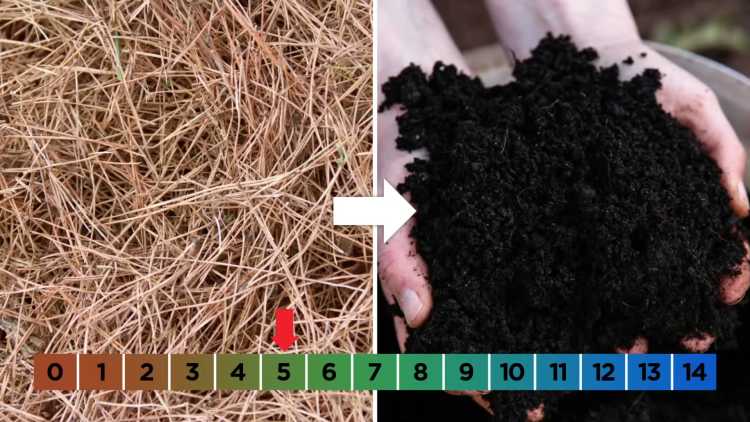
Or brave the morning chill and scatter some fresh coffee grounds onto the soil. This will turn your hydrangeas blue!
Alternatively, if you prefer pink hydrangeas, then chop up some old cooking mushrooms and mulch them into the soil to raise the pH to be less acidic.
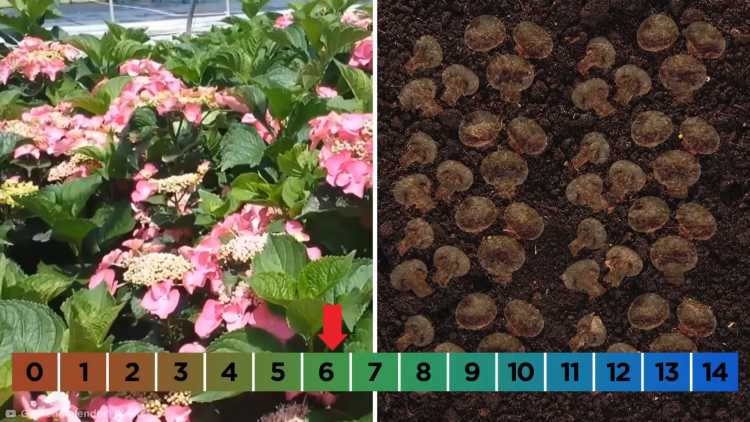
Or if you’re a keen baker, try a couple spoonsful of baking soda dissolved in water.
However, you should know that hydrangeas don’t change color overnight. Rather, it’s a process that takes several weeks to a few months as the plant’s petals draw up aluminum ions. So, if you scatter old pine needles on the soil at Christmas, your hydrangeas should turn from pink to blue by Easter!
Honey Love
Instead of throwing away the flowers from an old, wilting bouquet, did you know you could turn them into new plants? Yeah, that beautiful bouquet you received can become your own potted rose bush. It’s as simple as dipping the stems in honey!

Honey can act as a powerful liquid fertilizer, containing two of the big three plant nutrients: phosphorus and potassium, as well as other vital nutrients like calcium, iron, magnesium, and zinc.
Honey also has powerful antibacterial and antifungal properties, so can prevent disease from affecting your cuttings. Simply shave down the bottom of the stem, dip it into a pot of honey, then plant it into the soil. You’ll have new plants in no time!
Planting in a Fish Tank
Have you ever thought about growing vegetables in your fish tank? Crazy, right? But as strange an idea as that may sound, there is in fact a whole science behind it – Aquaponics.
Like all living creatures, fish poop. And if there’s one thing plants love – it’s poop. Gross to us humans, but for plants fecal matter is a rich source of nutrients. Aquaponics is the science behind harnessing the power of poop to farm our food!
How does it work? Well, Fish poop is high in ammonia. Beneficial bacteria in the water can convert ammonia into those previously mentioned essential nitrates, which are then absorbed through the roots of the plant. The more the fish poop, the bigger the plants grow. In return the plants keep the fish’s water clean by removing the toxic ammonia.
This is a technique used in industrial farming, where electric pumps move nutrient-rich water from fish tanks up to a platform of crops growing above. And this is a technique you can replicate at home!
If you have any old sweet potatoes knocking around, then they’ll be perfect for this slightly simpler aquaponics setup. Pierce three toothpicks into the base of the sweet potato to suspend it over your fish tank.
Ensure only the tip of the sweet potato is submerged in the water, otherwise the whole vegetable will rot. Within a week, roots will begin to grow into the water and leaves will sprout upwards as your sweet potato plant grows.

Once your tank has been fully cycled and the beneficial nitrifying bacteria have taken hold, you can add the fish. Then sit back and admire as your sweet potato plant grows, fed by fish poop. Don’t worry, it doesn’t affect the taste!
Dynamic Duos
Did you know plants have social lives too? You probably won’t be receiving any friend requests on Facebook from daisies or lilies, but the plants in your yard will thrive if placed beside their buddies!
An example of botanical best friends are strawberries and thyme. Thyme actually wards away maggots and attracts beneficial insects such as hover flies that dine on aphids and caterpillars.

As a result, these insects can't munch on the strawberry’s leaves. And the strawberry shows its appreciation by producing juicy fruit!
Another classic duo is roses and grapes. These two are frequently paired together in vineyards, as roses act as an early warning system for powdery mildew; a white, powdery fungus that grows on leaves and can destroy the grape vines.
Roses will show symptoms of powdery mildew faster than the grapes, giving farmers time to apply fungicide sprays before it affects the fruit.

Marigolds are the popular kids. Natural pesticides, they are a best friend to just about any plant. Placing a bright marigold border around your tender plants is a perfect way to guard them from parasitic pests such as nematodes. These are microscopic worms that have spear-like mouths which they use to puncture plant roots to leech nutrients, killing off crops and flowers.
Marigolds defeat nematodes by releasing a toxic chemical from their roots that destroys their eggs before they can hatch. They also attract bees which helps pollinate crops. If you want your plants to have a fun garden party, plant marigolds!
Anti-Gravity Garden Variety
Have you always wanted your own vegetable patch, but live in an apartment without any outdoor space? Then you might want to try growing plants upside down!
Plants only really require light and water - they don’t care about gravity! A trend started in the 90s to grow tomatoes, anti-gravity growing has since taken hold as a gardening technique that deters pests and fungi.
The technique works best with vine and trailing plants, such as tomatoes, peppers, eggplants, cucumbers, beans, herbs, and strawberries. You could set up a whole farmer’s market on your balcony! However, this technique does have some drawbacks.
Though plants may be gravity resistant, water certainly isn’t. Unless you secure yourself some water-retaining pots, there will be lots of puddles on the floor! Moisture also evaporates more quickly in hanging pots as they sit in air currents. So, you’ll need to water your plants more regularly.
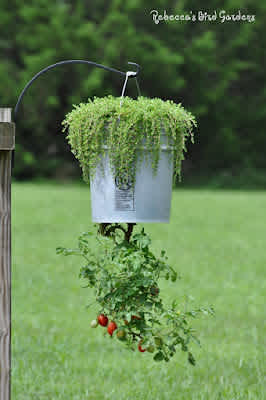
And if your upside-down planters are under an eave or a roof this could cause some wonky U-Bend stems, as the plant hormone auxin causes plants to grow towards sunlight. Ensuring there is plenty of direct sunlight above the planter will solve this problem.
On top of that, not all plants tolerate hanging upside down - especially heavier plants, which could break their stems due to the strain of their own weight. Or worse have the whole pot come crashing down on your head!
However, for those of you feeling bold, you can grow watermelons upside down! Watermelons grow on a vine which you can train to grow along a trellis or archway. Perfect for a balcony.
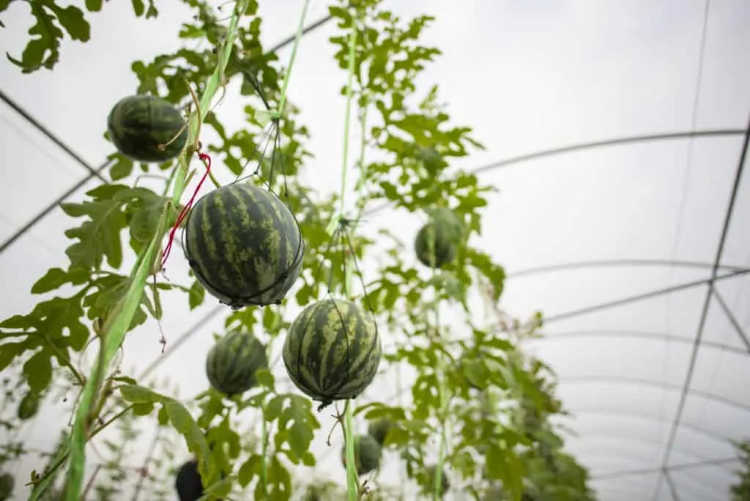
However, as the watermelon fruit grows it gets very heavy! The vine won’t be able to support the watermelon mid-air, so secure the fruit with a little hammock until your fruit is ready for harvest. And then, you can enjoy your juicy watermelon on your balcony relaxing in your own sunny hammock!

The Hairy Gardener
Hair clogging up the shower drain? Or has your hairbrush grown three times the size? Well – shockingly - you can put your old hair to good use in the garden!
You might not know this, but human hair is a very rich source of nitrogen! However, hair takes a month or so to decompose into the inorganic form of nitrates that plants can use.
With that in mind, it’s best used as a fertilizer for slow-growing plants such as basil, sage, or acer trees. The decomposition of hair can be sped up by composting worms, which will happily munch through your old haircuts.
Human hair can also act as a deterrent for large pests like deer and rabbits, because – as it turns out - they can’t stand the scent of human hair! So, sprinkle a few strands of hair on your topsoil to keep grazing deer away and mix it up with soil to make homemade fertilizer.
For more techniques to easily regrow store bought veggies and herbs, watch the video below.
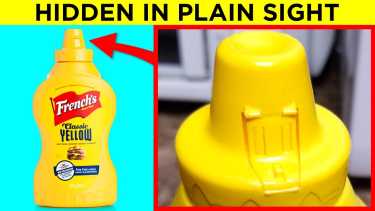










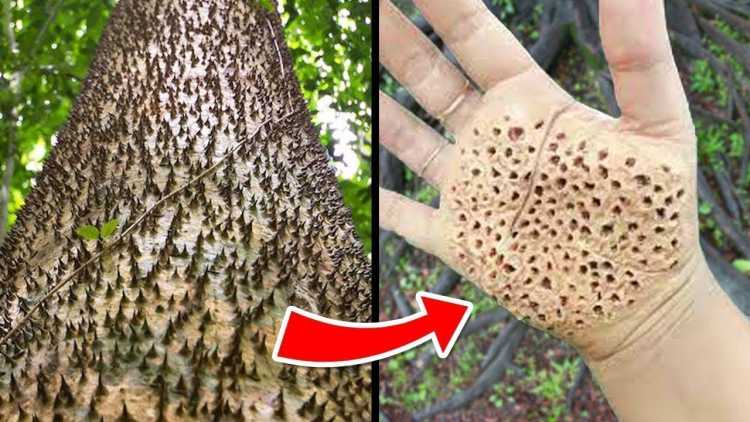

![Embarrassingly Dumb Ways People Died - Darwin Awards Winners [Part 14]](http://images.ctfassets.net/l031eph9pzsg/686De1sLP59fCNWLkbDwm5/4031ad820164610867ececf9513ce5ce/embarrassingly-dumb-ways-people-died---darwin-awards-winners-_part-14_.jpg?w=750&h=422&fl=progressive&q=50&fm=jpg)


